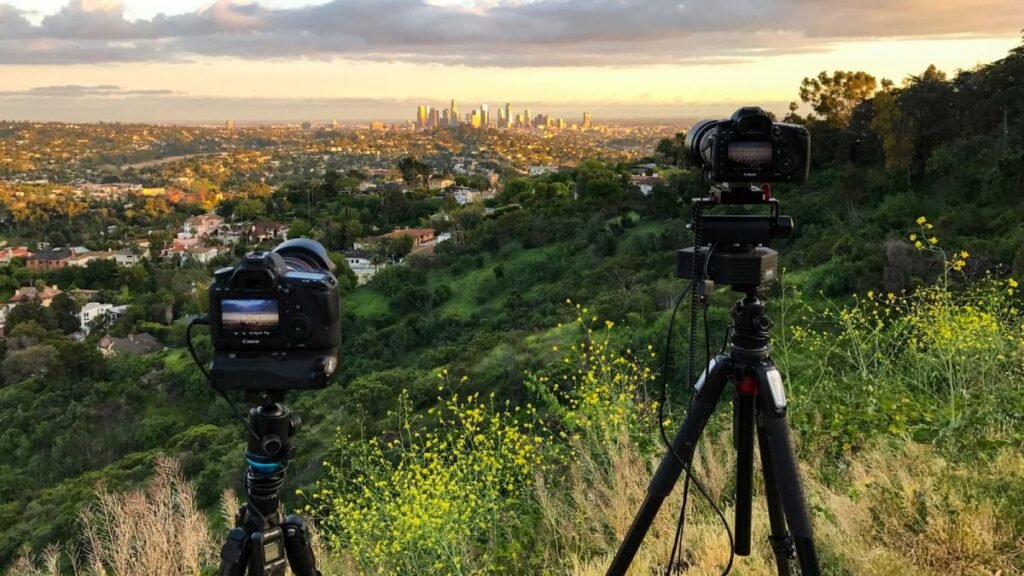Jul 3, 2024
Top Tips for Time-Lapse Photography
Time-lapse photography is a fascinating technique that allows you to capture the passage of time in a way that transforms mundane scenes into captivating visual stories. Whether you’re documenting the movement of clouds, the hustle and bustle of a city, or the blooming of a flower, mastering time-lapse photography can elevate your creative skills. Here are some top tips to help you get started and excel in this mesmerizing form of photography.

Understanding Time-Lapse Photography
Before diving into the technical aspects, it’s essential to understand what time-lapse photography entails. This technique involves capturing a series of images at set intervals over a period, which are then played back at a standard video frame rate. This process compresses time, making slow movements appear rapid and dynamic. Time-lapse photography is perfect for showcasing processes that occur slowly, such as the setting sun or the ebb and flow of tides.
Choosing the Right Equipment
The first step in time-lapse photography is selecting the right gear. A sturdy tripod is crucial to keep your camera steady throughout the shooting period. Any movement can ruin the smoothness of the final video. Additionally, you’ll need a camera with manual settings and an intervalometer. An intervalometer allows you to set the intervals at which your camera will take photos, ensuring consistency. Many modern cameras have built-in intervalometers, but external ones are also available.
Setting Up Your Camera
Proper camera settings are vital for successful time-lapse photography. Start by switching to manual mode to have full control over the exposure settings. Set a low ISO to minimize noise, and choose a small aperture to maintain a wide depth of field. The shutter speed depends on the scene you’re capturing. For scenes with movement, a slower shutter speed can create a motion blur effect, adding a sense of fluidity to the final video.
Planning Your Shoot
Planning is essential for time-lapse photography. Determine the duration of your shoot and the interval between shots. Shorter intervals are suitable for fast-moving subjects, while longer intervals work best for slower changes. Calculate the total number of shots needed by dividing the total shoot time by the interval. For example, a 10-second video at 30 frames per second requires 300 shots. Ensure you have enough memory and battery life to complete the shoot.
Composing Your Shots
Composition is as important in time-lapse photography as it is in regular photography. Consider the movement within the scene and how it will look when sped up. Use leading lines, the rule of thirds, and other compositional techniques to create engaging visuals. Foreground elements can add depth and context to your shots. Think about how the light changes throughout the day and position your camera to take advantage of the best lighting conditions.
Monitoring and Adjusting
Once your shoot is underway, monitor your equipment regularly. Check that the camera is still stable on the tripod and that the intervalometer is functioning correctly. Adjustments might be necessary if the lighting conditions change drastically. For instance, if you’re shooting a sunset, you may need to adjust the exposure settings to account for the decreasing light. Being attentive to these changes ensures that your final video will be smooth and visually appealing.
Editing Your Time-Lapse
Editing is where your time-lapse photography comes to life. Transfer your images to a computer and use time-lapse software to compile them into a video. Many video editing programs, such as Adobe Premiere Pro and Final Cut Pro, offer tools specifically for time-lapse editing. Adjust the frame rate to your desired speed, typically 24 or 30 frames per second. You can also tweak the exposure, contrast, and color balance to enhance the overall look.
Adding the Final Touches
To make your time-lapse video even more captivating, consider adding music or sound effects. The right audio can enhance the mood and impact of your video. If your time-lapse includes significant changes in weather or light, transitions can help smooth these shifts. Be creative with your edits, but avoid overdoing it; the goal is to highlight the natural beauty of the passage of time.
Experimenting and Learning
Time-lapse photography is a skill that improves with practice. Experiment with different subjects, intervals, and settings to find what works best for you. Analyze your results and learn from any mistakes. Joining online photography communities can provide valuable feedback and inspiration. As you gain experience, you’ll develop a better understanding of how to capture stunning time-lapse sequences that tell compelling visual stories.
Conclusion
Mastering time-lapse photography requires patience, planning, and a willingness to experiment. By understanding the basics, choosing the right equipment, and paying attention to detail, you can create captivating videos that showcase the beauty of time’s passage. Remember to practice regularly and learn from each shoot, and soon you’ll be creating mesmerizing time-lapse videos that captivate and inspire.
More Details